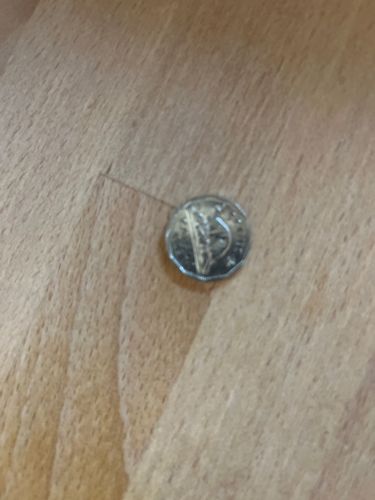10 Pesa
Country of Origin: Estonia
Year of Issue: Circa 1920s A.D. (based on historical use of "Pesa" as a denomination and visual style)
Denomination: 10 Pesa
Composition: Likely copper-nickel, common for coins of this value and era, though exact composition cannot be confirmed without a clearer view.

Brief Description
The image shows a small, silver-colored coin with visible markings, including what appears to be a number '10' and perhaps a letter 'P' or 'D', indicating a denomination. The coin has a reeded edge and some design elements that are hard to discern clearly due to the image quality and distance, but it looks like a standard circulating coin.
Historical Significance
Coins from Estonia, particularly those bearing '10 Pesa', would be from the early period of Estonian independence, either from 1918-1940 or post-1991. The Pesa was a subunit of the Estonian Mark (EMK), which was in circulation from 1919 to 1928, or the Estonian Kroon. These coins represent a period of nation-building and economic identity for Estonia.
Estimated Value
Given the poor image quality, an accurate estimate is difficult. However, common circulating coins from the early 20th century, especially those not made of precious metals, are typically valued from under $1 to a few dollars, depending heavily on their exact year, mint mark, condition (grade), and specific variety. Without more details, it's likely of minimal monetary value beyond face value, unless it's a rare year or in uncirculated condition for its type.
Care Instructions
To preserve the coin, avoid cleaning it, as this can devalue it. Handle by the edges to prevent oils from your skin from tarnishing the surface. Store in a cool, dry place, ideally in an inert holder like a Mylar flip or a non-PVC coin slab to protect it from environmental damage and physical scratches.
Created At: 2025-09-03T15:27:08.968330